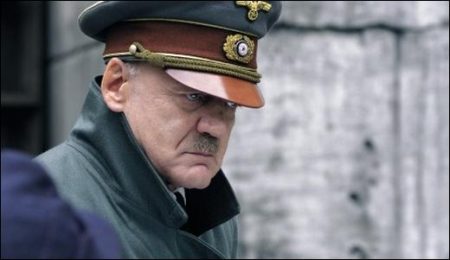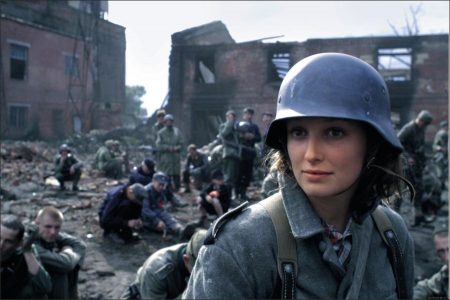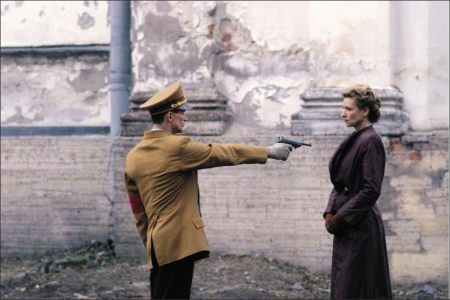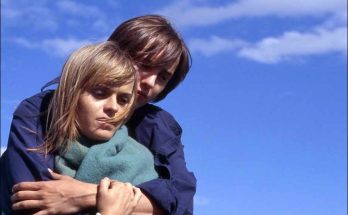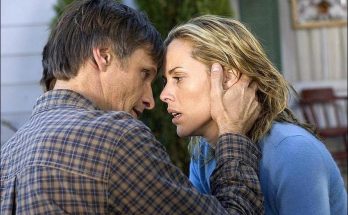Downfall flashes forward to Hitler’s 56th birthday, April 20, 1945. Traudl Humps — now Frau Traudl Junge — is living in the Führerbunker with Gerda Christian and Constanze Manziarly, another secretary and private cook, respectively, for Hitler. Artillery fire wakes the trio, and generals Wilhelm Burgdorf and Karl Koller explain that the Russians are twelve kilometres from the city center. Hitler is visibly aged, his left arm continually shaking, and in ill humour.
The birthday reception introduces Heinrich Himmler and his adjutant Hermann Fegelein, Nazi Party Leader Martin Bormann, and Walther Hewel of the foreign ministry. Hitler reveals his intention of staying in Berlin, and Fegelein’s intention to leave. Hewel and Himmler urge Hitler to seek a diplomatic solution, which Hitler rejects. Later, Albert Speer and Eva Braun both reject Fegelein’s advice to decamp to Bavaria. Speer advises Hitler to be onstage when the curtain falls. Eva’s character is revealed with her remark, “He is the Führer”; he knows best.
Elsewhere, at a large office building, “Operation Clausewitz” is in effect; documents are destroyed, artwork moved, and SS-Doctor Ernst-Günther Schenck is introduced as the officer responsible for Berlin’s public safety and the flight of the SS medical infrastructure. Schenck argues with a superior officer to remain in the city. Meanwhile, in the government district, Himmler reveals his secret negotiations with the Allies; Fegelein cautions him against treason.
A sub-plot about Hitler Youth soldier Peter Kranz and his father is introduced. The father, missing an arm lost in another war, begs his son to accept that the war is lost and soon will end and to return home. Peter’s teen-aged commander, a lieutenant in charge of an 88mm anti-aircraft gun, tells the father he should be proud of his son, Peter, who is to be decorated by Hitler for having destroyed two Russian tanks that day. The father continues trying to talk reason to his son, and his comrades, and leave. They refuse, bragging that they will fight to the last man. The angry Peter runs away, calling his father a coward.
Back in the Führerbunker, generals Wilhelm Keitel and Alfred Jodl advise Hitler of their bad military situation. Hermann Göring is briefly seen. Hitler is outraged when his impossible military orders cannot be executed. Propaganda minister Joseph Goebbels is presented as the obsequious toady responsible for buttressing morale with grandiose talk of master plans and secret weapons. SS General Wilhelm Mohnke is depicted as a square-jawed professional soldier charged with the government district’s defence. He tells Hitler that many civilians must be evacuated, but his suggestion is denied. After the meeting, the officers agree the Führer has no sense of reality. Fegelein suggests they tell Hitler, however, rationality is ruled out, given their death-pledge to Hitler. Later, Hitler decorates the Hitler Youth tank killers, including Peter Kranz, while Goebbels and Speer observe.
Climax
The Goebbels’ suicide.Hitler has his final meal in silence with his cook, Constanze Manziarly, and the female secretaries. He bids farewell to the bunker staff, gives Magda Goebbels his Golden Party Badge (marking original members of the NSDAP), and retreats to his room with Eva Braun. Despite Frau Goebbel’s pleas, the pair commit suicide and the bodies are burned in the courtyard outside the bunkers’ emergency exit.
Hitler’s demise is juxtaposed with the situation in Berlin, where not only is combat raging between German and Soviet forces, but civilians – witnessed by Peter Kranz – are being executed by German security forces for not continuing the fight.
After the announcement of the death of Adolf Hitler, officers and others within the bunker complex immediately and simultaneously light up cigarettes en masse. This is an allusion to Hitler’s staunch opposition to smoking. Another element of Hitler’s life Downfall alludes to is the fact that he was a vegetarian.
General Krebs attempts to negotiate a surrender with terms with Marshal Vasily Chuikov, who insists on an unconditional surrender. The decision to surrender is not unanimous among the Germans, who still feel duty bound to the dead Führer.
The murder of the Goebbels children is recreated in painful detail, from the involvement of Dr. Ludwig Stumpfegger in preparing sedatives, to Frau Goebbels’ placement of cyanide capsules in their mouths as they slept. Krebs and Burgdorf commit suicide, leaving Rochus Misch as the last survivor in the bunker.
At last, General Weidling arranges for a cease fire and he pleads via a loudspeaker van for the fighting to stop. Peter Kranz returns home to find his parents killed by security forces.
Denoument
Bunker survivors’ breakout among Berlin’s debrisDr. and Frau Goebbels commit suicide in the grounds outside the bunker in a scene without dialogue. Inside the hospital bunker, General Mohnke asks Dr. Schenck to leave with them, and Schenck parts company with Dr. Haase. As they leave, Constanze Manziarly is seen contemplating her cyanide capsule (her real life fate is unknown).
The majority of bunker survivors attempt a breakout, but many are killed by Russian infantrymen. Hewel and Schenck ponder their continued existence in a nighttime scene. As the breakout continues the next day, Junge and Christian are advised to cross the Russian lines; the latter refuses, and Junge makes her way through the Russians, joined by Peter Kranz.
General Mohnke, commanding the last remnants of the male bunker survivors, asks for opinions on what to do next. One young officer declares that they cannot outlive the Führer. And that they must shoot to the very last bullet before committing suicide. The assembled men agree, as does Hewel, however, when an officer arrives to bring news that Berlin has surrendered, only the young man and Hewel shoot themselves.
Conclusion
Finally, another scene of the interview with an old Traudl Junge is shown. She states that the Nuremberg Trials made her aware of the horrors of the Holocaust, but that she used to excuse herself on basis of her youth and ignorance and not being personally guilty of the atrocities of the Nazis. However, when she saw the memorial of Sophie Scholl, of her own age and executed on the same year when she was first employed by Hitler, she realized that she too could have found out about things and acted differently.
Downfall (2005)
Der Untergang
Directed by: Oliver Hirschbiegel
Starring: Bruno Ganz, Juliane Köhler, Thomas Kretschmann, Ulrich Matthes, Heino Ferch, Corinna Harfouch, Alexandra Maria Lara, Matthias Habich, Birgit Minichmayr, Charlotte Stoiber
Screenplay by: Bernd Eichinger
Production Design by: Bernd Lepel
Cinematography by: Rainer Klausmann
Film Editing by: Hans Funck
Costume Design by: Claudia Bobsin
Music by: Stephan Zacharias
MPAA Rating: R for strong violence, disturbing images and some nudity.
Distributed by: Newmarket Films
Release Date: February 18, 2005
Views: 422
